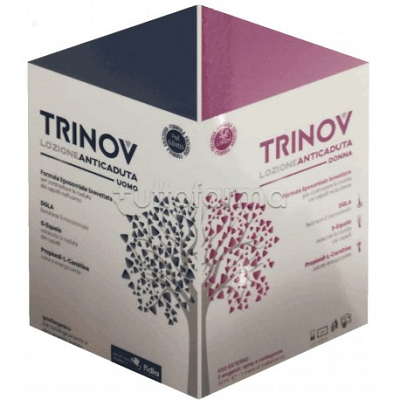Humans have three Hedgehog (Hh) genes: Sonic (SHH), Desert (DHH) and Indian (IHH). Of these three, Sonic Hedgehog is the most studied.
Update: July 1, 2022 — A new study finds that a signaling molecule (SCUBE3) stimulates hair growth significantly. The hedgehog pathway is also involved.
Update: March 17, 2020 — A new study concluded that coordinated hedgehog signaling induces new hair follicle generation in adult skin. The activation of Hedgehog (Hh) signaling in adjacent epithelial and stromal cells in adult mice created de novo follicles.
Not surprisingly, the new hair follicles were also accompanied with skin tumors. However, treatment with Hedgehog-pathway inhibitor Vismodegib restricted tumor growth. At the same time, the new follicles remained intact.
This post was originally written in July 2017. Then updated in December 2018 with the latest major developments summarized at the bottom.
The Sonic Hedgehog Pathway and Hedgehog Signaling
Perhaps the most important area of hair loss research that I have not yet covered on this blog relates to the Sonic Hedgehog (SHH) protein and signaling pathway. This Shh pathway is used by cells to communicate with each other. While the sonic hedgehog protein has numerous critical effects on a developing human embryo (brain, craniofacial, lungs, teeth and more), it also continues to be important in adulthood when it controls certain stem cell division activities.
Getting into too much more detail about this would go beyond the scope of this blog. Shh was named after SEGA’s famous video game character, Sonic the Hedgehog.
Sato, Leopold and Crystal (1999)
In the initial decade after the first identification of the hedgehog gene around 1980, there was almost no research devoted to the impact of the SHH pathway upon human hair. However, this started to change in the mid-1990s (e.g., this from 1998).
It culminated in the seminal work on this subject that was published in the US in 1999: “Induction of the hair growth phase in postnatal mice by localized transient expression of Sonic hedgehog“.

Of the three authors of the above study, the most cited was Cornell based Dr. Ronald Crystal. He remains in practice even today.
These authors injecting balding mice hair cells with the sonic hedgehog gene using an adenovirus. They then discovered that resting hair follicles in the mice started growing robust hair of native hair color. They dyed all the existing fur blonde so as to differentiate it from the newly growing hair.
Moreover, upon final analysis, the team found that the SHH gene was active in the injected areas of the skin, but not elsewhere. A very humorous as well as highly informative article on this subject from 1999 can be read here.
Curis-Procter & Gamble Partnership RIP
After the groundbreaking 1999 study on mice, some researchers were mildly optimistic when it came androgenetic alopecia. They hoped that SHH activation could also have positive implications on human hair growth in balding men and women. A new company that was formed in 2000 called Curis partnered with Procter & Gamble in 2005. Their aim was to try and develop a topical Hedgehog agonist product for scalp hair growth.
However, this partnership ended in 2007 due to potential safety issues, since SHH can potentially also cause basal cell carcinoma cancer. P&G was not willing to continue with the drug development work. Even a very minimal risk of developing cancer is not worth it for treating cosmetic problems such as hair loss. At least in the eyes of government. Below is an interesting comment from the at-the-time CEO of Curis:
“We are obviously disappointed that the collaboration with Procter & Gamble will come to an end. We believe that our topically administered Hedgehog agonists have demonstrated encouraging efficacy in preclinical hair growth models and we were hopeful that one of our Hedgehog agonist drug candidates under the program would have progressed.”
Current Status
While the initial excitement of a SHH based cure for hair loss has long ended, sporadic research activity in this area continues (e.g, this in 2016). Moreover, in 2013, scientists even found that SHH signaling regenerates ear hair cells.
On a related note, read my post from earlier this year regarding ear hair regeneration and possible links with scalp hair regeneration. There is some controversy in that analogy if you read the comments to that post.
Hedgehog Pathway Update
On November 21st 2018, an important new study related to the Sonic Hedgehog (Shh) pathway and hair growth in mice was published in Nature Communications:
The lead author of this study is the famous Dr. Mayumi Ito, who I have covered numerous times on this blog. The research was led by Dr. Ito and her team from the NYU School of Medicine. Other well known co-authors include Dr. George Cotsarelis, Dr. Maksim Plikus and Dr. Sarah Millar.
For some reason, a number of newspapers around the world only covered these results a week after publication. Even Dr. Ito’s own university only discussed the findings on November 28th. More here.
The study authors claim to have shown that activation of the Sonic hedgehog (Shh) pathway regenerates dermal papilla cells. This in turn ensures hair follicle neogenesis. The experiment was done on wounded and damaged skin that was previously unable to grow hair.
Moreover, the authors have found a way to prevent cancerous tumor growth upon Shh pathway activation:
“To bypass the risk of tumors reported in other experiments that turned on the sonic hedgehog pathway, the NYU Langone team turned on only fibroblasts located just beneath the skin’s surface where hair follicle roots (dermal papillae) first appear.”
The study also has some very interesting discussion about the interplay with Shh signaling and Wnt signaling and activation.
